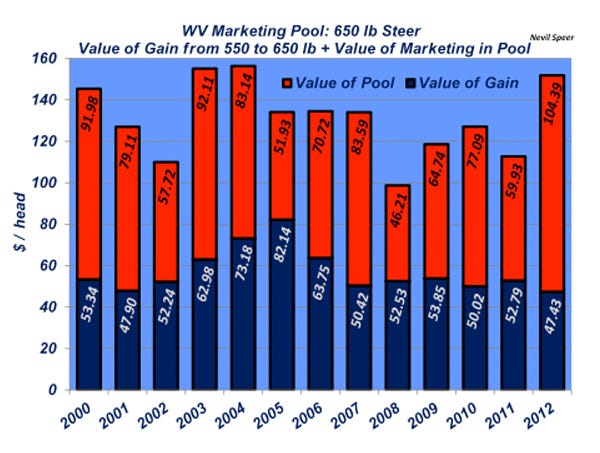Industry At A Glance: Program Shows Value-Added Payoff
West Virginia demonstrates the importance of documentation in ensuring proper compensation in the marketplace.
April 18, 2013

A previous “Industry At A Glance” feature focused on potential revenue derived from value-added marketing programs. The primary emphasis was that the significance of documentation and/or certification to ensure receiving proper compensation in the marketplace can’t be understated. Considering the relatively minimal amount of time and/or effort required to provide documentation, the effort provides an excellent dividend.
That reality gets played out in different ways across the country. An excellent example is West Virginia – the state has a well-established feeder cattle marketing pool program. Several prerequisites exist for participation in the program, including a comprehensive herd health program protocol, registered premise ID and Beef Quality Assurance certification.
All calves must be individually identified, with vaccination certified according to WV/PA Quality Assurance program protocol. Gold program calves have been weaned for 45 days, steer calves castrated, dehorned and healed prior to shipment (heifer calves are guaranteed open). Additionally, all calves are age and source verified. Finally, a majority of the calves are sired by performance-tested bulls from one of the two evaluation programs in West Virginia.

Annual results are represented above for a 650-lb. steer calf marketed through the pool. There are several important takeaways from long-term analysis of the data.
The value of gain represents the overall market reward ($/head) for the incremental gain from 550 lbs. to 650 lbs. That’s generally a breakeven (or worse) proposition in the broader market given requirements for buyers to sort and assemble loads plus freight considerations to the final destination.
However, the additional gain provides opportunity to precondition and/or background calves to take full advantage of the value-added marketing pool program. The pool allows smaller producers to overcome those costs (market discounts with less-than-load lots) noted above. That additional revenue in West Virginia exceeded $100/head in 2012 (equivalent to $16/cwt., as compared to black, black white-face, M-L1 feeder calves in the broader market).
In other words, management inputs allowed for nearly $150/head in 2012. That’s substantial additional revenue for those operations willing to document their inputs (at no real additional cost), and participate according to the rules of the marketing program. The most variable cost has been the cost of feed for the 45-day weaning period. Many producers have held this cost in line by incorporating good grazing management.
Clearly, the value of such programs varies across regions, depending upon local market dynamics, distance from key feeding regions, etc. What types of opportunities are available in your area that may provide some additional revenue (at no real additional cost)? Would you be willing to give up some marketing independence to receive the rewards of participating in such a program? Leave your thoughts in the comments section below.
(For more detailed information about the West Virginia marketing pool, contact Phil Osborne, West Virginia Extension beef cattle specialist, [email protected]).
You might also like:
Preconditioning Of Calves Is A Win-Win-Win Equation
About the Author(s)
You May Also Like




.png?width=300&auto=webp&quality=80&disable=upscale)
